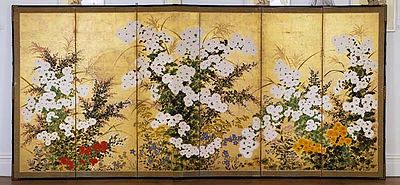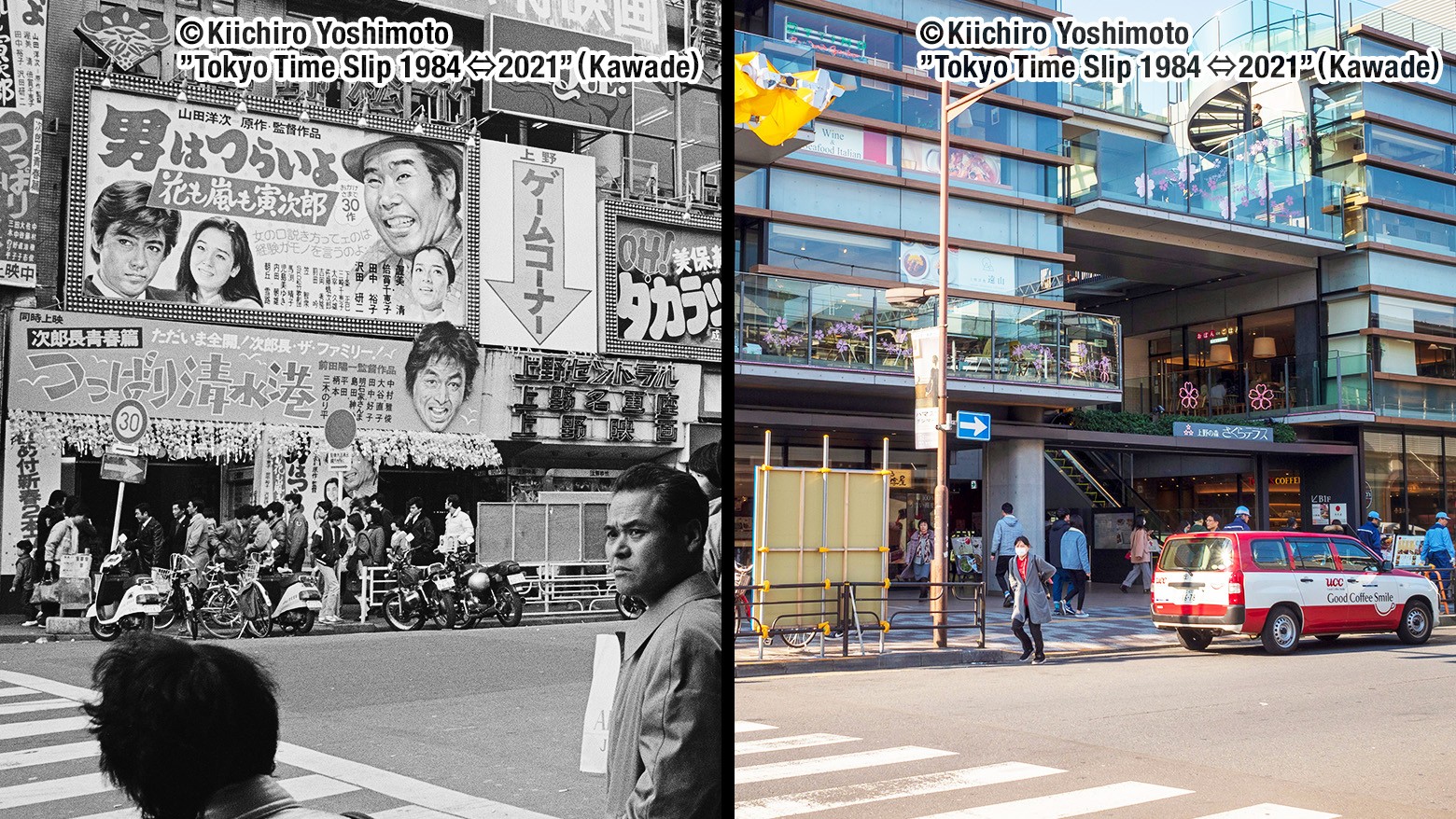10:50-10:55
Japanology Plus mini
Japanology Plus explores Japanese life and culture. In this 5-minute digest, we look at lacquerware: durable objects with a distinctive luster.
Distinctive Style of Japanese Art Known as Rinpa is Explored in Metropolitan Museum Exhibition
May 26, 2012– January 13, 2013
First Rotation: May 26- September 9, 2012
Second Rotation: September 12, 2012 – January 13, 2013
Location: The Sackler Wing Galleries for the Arts of Japan, second floor
Press viewing: Monday, September 10, 10 a.m. - noon
Rinpa is a modern term that refers to a distinctive style of
Japanese pictorial and applied arts that arose in the early 17th
century and has continued into modern times. Literally meaning “school
of Korin,” Rinpa derives its name from that of the renowned artist Ogata
Korin (1658–1716). It embraces art marked by a bold, graphic
abbreviation of natural motifs, frequent reference to traditional court
literature and poetry, lavish use of expensive mineral and metallic
pigments, incorporation of calligraphy into painting compositions, and
innovative experimentation with brush techniques.
The exhibition is made possible by The Miriam and Ira D. Wallach Foundation.
A special exhibition featuring some 90 brilliantly executed works of
art created in Japan by Rinpa-school artists will be held at The
Metropolitan Museum of Art in two rotations; the first opening on May 26
and the second on September 12, 2012. Highlighting the school’s most
prominent proponents,
Designing Nature: The Rinpa Aesthetic in Japanese Art
will trace the development of the Rinpa style and demonstrate how it
continued to influence artists through the 19th and 20th centuries.
Comprising some 50 works from the Museum’s own holdings, as well as some
45 loans from public and private collections on the East Coast, the
exhibition will include many masters’ renowned works in a variety of
media―painting, textiles, lacquerware, and ceramics.
Works on view in the exhibition’s first rotation will include: an early 18th-century, two-panel folding screen,
Rough Waves, by Ogata Korin, depicting highly stylized waves; another 18th-century, two-panel folding screen,
The Persimmon Tree,
by Sakai Hoitsu, the founder of the Edo branch of Rinpa, revealing the
ink-painting techniques he learned from predecessors such as Tawaraya
Sotatsu; and a 19th-century pair of six-panel folding screens,
Morning Glories by Suzuki Kiitsu, who was Hoitsu’s primary pupil and who captured the exuberant proliferation of the blossoms and leaves.
A centerpiece of the exhibition’s second rotation will be the famous Korin
Irises at Yatsuhashi (Eight Bridges),
with its brilliant array of clusters of purple irises against a gold
background. A hanging scroll by Kenzan, Korin’s younger brother,
captures an autumnal mood through a depiction of vivid red ivy and a
poem rendered in the artist’s distinctive calligraphy. An early
17th-century screen of calligraphy by Konoe Nobutada features
transcriptions by female poets of the Heian court; on loan from Yale
University Art Museum, it will be on public display for the first time.
Along with once-in-a-lifetime displays of masterpieces of painting
and calligraphy, the exhibition will highlight rare illustrated books,
lacquerware, ceramics, cloissoné, and kimono that demonstrate how the
Rinpa aesthetic was transmitted over generations into modern times.
Special digital displays of illustrated books by Kamisaka Sekka will be
available in the galleries so that visitors can “turn the pages” of
early 20th-century books that will be exhibited in cases nearby.
By the late 19th century, the idea of a Rinpa school had become
firmly established, both in the Japanese consciousness of a national
history of art and internationally. To a certain extent, Rinpa became
synonymous with the very idea of Japanese art, since its aesthetic
extended to the lacquerware, textiles, and ceramics that were
transmitted to the West. Prominent among the artists of the modern age
who exemplified the transmission of this Kyoto-based aesthetic into the
modern consciousness were Shibata Zeshin, a lacquer artist and painter,
and Kamisaka Sekka, who excelled in both painting and print media.
The exhibition will be accompanied by a catalogue.
The catalogue is made possible by the Richard and Geneva Hofheimer Memorial Fund.
In conjunction with the exhibition, the Museum offers various education programs, including gallery talks and a
Sunday at the Met on September 30.
Designing Nature: The Rinpa Aesthetic in Japanese Art is organized by John T. Carpenter, Curator of Japanese Art in the Department of Asian Art at The Metropolitan Museum of Art.
The exhibition will be featured on the Museum’s website at
www.metmuseum.org.
# # #
September 6, 2012
From Wikipedia, the free encyclopedia
 Spring Landscape
Spring Landscape, unknown
Rimpa school painter, 18th century, six-screen ink and gold on paper.
Rimpa (琳派 Rimpa?), is one of the major historical schools of
Japanese painting. It was created in 17th century
Kyoto by
Hon'ami Kōetsu (1558–1637) and
Tawaraya Sōtatsu (d. c.1643). Roughly fifty years later, the style was consolidated by brothers
Ogata Kōrin (1658–1716) and
Ogata Kenzan (1663–1743).
The term "Rimpa" is an abbreviation consisting of the last syllable from "Kōrin" with the word for school
(派 ha?) (with
rendaku changing this to "pa"), coined in the
Meiji period. Previously, the style was referred to variously as the Kōetsu school
(光悦派 Kōetsu-ha?), or Kōetsu-Kōrin school
(光悦光琳派 Kōetsu-Kōrin-ha?), or the Sōtatsu-Kōrin school
(宗達光琳派 Sōtatsu-Kōrin-ha?).
History

portion of Sōtatsu's
Fūjin Raijin-zu
Hon'ami Kōetsu founded an artistic community of craftsmen supported by wealthy merchant patrons of the
Nichiren Buddhist sect at
Takagamine in northeastern Kyoto in 1615. Both the affluent merchant town elite and the
old Kyoto aristocratic families favored arts which followed classical traditions, and Kōetsu obliged by producing numerous works of
ceramics,
calligraphy and
lacquerware.
His collaborator, Tawaraya Sōtatsu maintained an atelier in Kyoto and produced commercial paintings such as decorative fans and
folding screens.
Sōtatsu also specialized in making decorated paper with gold or silver
backgrounds, to which Kōetsu assisted by adding calligraphy.
Both artists came from families of cultural significance; Kōetsu came from a family of swordsmiths who had served the
imperial court and the great warlords,
Oda Nobunaga and
Toyotomi Hideyoshi, in addition to the
Ashikaga shōguns. Kōetsu's father evaluated swords for the
Maeda clan,
as did Kōetsu himself. However, Kōetsu was less concerned with swords
as opposed to painting, calligraphy, lacquerwork, and the
Japanese tea ceremony (he created several
Raku Ware tea bowls.) His own painting style was flamboyant, recalling the aristocratic style of the
Heian period.
Sōtatsu also pursued the classical
Yamato-e
genre as Kōetsu, but pioneered a new technique with bold outlines and
striking color schemes. One his most famous works are the folding
screens ”Wind and Thunder Gods"
(風神雷神図 Fūjin Raijin-zu?) at
Kennin-ji temple in Kyoto and "Matsushima"
( 松島?) at the
Freer Gallery.
Later development

portion of Ogata Kōrin's
Kōhakubai-zu
The
Rimpa school was revived in the
Genroku
era (1688–1704) by Ogata Kōrin and his younger brother Ogata Kenzan,
sons of a prosperous Kyoto textile merchant. Kōrin's innovation was to
depict nature as an abstract using numerous color and hue gradations,
and mixing colors on the surface to achieve eccentric effects, as well
as liberal use of precious substances like
gold and
pearl.
His masterpiece "Red and White Plum Trees"
(紅白梅図 Kōhakubai-zu?) c. 1714/5, is now at the
MOA Museum of Art in
Atami, Shizuoka. A dramatic composition, it established the direction of
Rimpa
for the remainder of its history. Kōrin collaborated with Kenzan in
painting designs and calligraphy on his brother's pottery. Kenzan
remained as a potter in Kyoto until after Kōrin's death in 1716 when he
began to paint professionally. Other Rimpa artists active in this period
were
Tatebayashi Kagei,
Tawaraya Sori,
Watanabe Shiko,
Fukae Roshu and
Nakamura Hochu.
Modern Rimpa
Rimpa was revived in 19th century Edo by
Sakai Hōitsu (1761–1828), a
Kanō school
artist whose family had been one of Ogata Kōrin’s sponsors. Sakai
published a series of 100 woodcut prints based on paintings by Kōrin,
and his painting "Summer and Autumn Grasses"
(夏秋草図 Natsu akikusa-zu?) painted on the back of Kōrin’s "Wind and Thunder Gods screen" is now at the
Tokyo National Museum.
Paintings of the early "Rimpa" artists were anthologized in small
paperback booklets such as the Korin gafu (The Korin Picture Album) by
Nakamura Hochu, first published in 1806. This was followed by an original work by Sakai Hoitsu called the Oson gafu, published in 1817.
Sakai had numerous students who carried the movement forward into the late 19th century, when it was incorporated into the
Nihonga movement by
Okakura Kakuzo and other painters. The influence of
Rimpa was strong throughout the early modern period, and even today
Rimpa-style designs are popular. One later artist of note is
Kamisaka Sekka.
Style
Rimpa artists worked in various formats, notably screens, fans
and hanging scrolls, woodblock printed books, lacquerware, ceramics,
and
kimono textiles. Many
Rimpa paintings were used on the sliding doors and walls (
fusuma) of noble homes.
Subject matter and style were often borrowed from Heian period traditions of
yamato-e, with elements from
Muromachi ink paintings, Chinese
Ming dynasty flower-and-bird paintings, as well as
Momoyama period Kanō school developments. The stereotypical standard painting in the
Rimpa style involves simple natural subjects such as birds, plants and flowers, with the background filled in with
gold leaf. Emphasis on refined design and technique became more pronounced as the
Rimpa style developed.
Notable Rimpa artists
References
- Leach, Bernard. Kenzan and his tradition;: The lives and times of Koetsu, Sotatsu, Korin, and Kenzan. Transatlantic Arts (1967). ASIN: B0006BPM10
- Mizuo, Hiroshi. Edo Painting: Sotatsu and Korin (Heibonsha Survey of Japanese Art). Art Media Resources (1972). ISBN 0-8348-1011-5
- Saunders, Rachel. "Le Japon Artistique: Japanese Floral Pattern
Design of the Art Nouveau Era. From the Collection of the Museum of Fine
Arts, Boston." Chronicle Books (2010). ISBN 978-0-8118-7276-8
- Stern, Harold P. Rimpa Masterworks of the Japanese Decorative School. The Japan Society (1971). ASIN B0000EEBUB
- Stanley-Baker, Joan (1984). "Japanese Art." London: Thames and Hudson Ltd.

大場松魚さん

